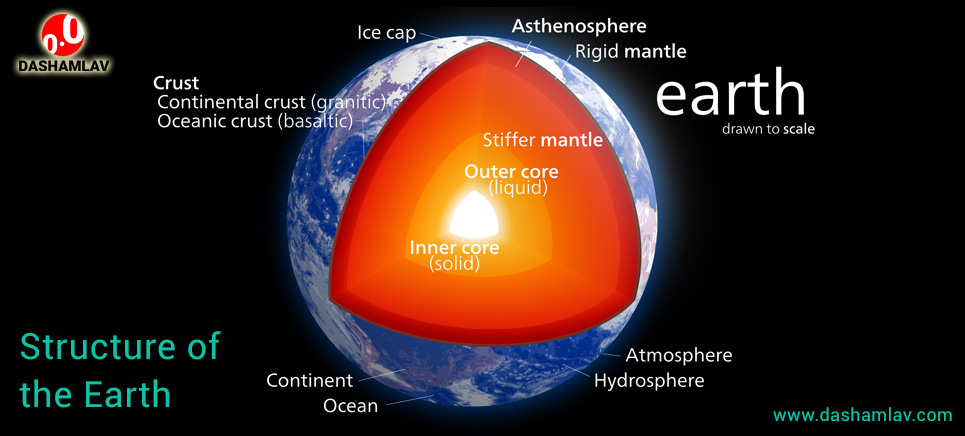What is an Earthquake?
Have you ever felt sudden shaking or trembling of ground beneath you lasting for a short period? If yes, then it is likely that you have experienced an earthquake!
Earthquake is a destructive natural phenomenon caused by violent movements of rocks inside the earth’s crust. Apart from shaking of ground, this phenomenon can also trigger floods, tsunamis, and landslides.
Mild earthquakes are often felt in regions that are susceptible to the risk of earthquakes. These mild tremors usually cause little or negligible damage. In fact, most earthquakes are mild and often go unnoticed and not felt by us. Major earthquakes, on the other hand, are not that common but they are very dangerous and damaging in nature. A major earthquake can cause huge destruction to buildings, houses and infrastructures. But most of all, it can claim many lives. Many people get killed under the debris of collapsed houses.
The nature of earthquakes is such that it claims more lives in comparison to other natural disasters. The reason behind this is that an earthquake can not be predicted. So far, we do not have any technology that can predict the occurrence of earthquakes.

Structure of the Earth
To understand the mechanism that works behind the occurrence of an earthquake, we need to first understand the structure of our planet Earth.
Earth is made up of three main layers: Core (innermost layer), Mantle (middle layer), and Crust (uppermost layer).
- Core: It is extremely hot and made up mostly of iron. The outer part of the core is made of molten iron. The Inner part of the core, on the other hand, is solid iron due to extremely high pressure on it.
- Mantle: Mantle is made of dense and solid rocks. Some portions of the mantle, however, also consist an amalgamation of solid rocks and hot molten rocks. Mantle experiences the heat generated from the core. This leads to setting up of huge convection current in the mantle. The giant convection currents so formed slowly move the mantle.
- Crust: It is made up of lighter rocks than the ones forming mantle. We all know that the upper surface of the Earth is not even. It has both land and ocean. The crust of Earth under the oceans is thinner in comparison to that of the land surface.
Oceanic & Continental Plates
Earth’s crust is not made of a single piece. Instead, it is composed of many large pieces of flat rocks called plates. Plates on which continents (land) exist are known as continental plates. Similarly, plates on which the ocean exists are known as oceanic plates. These continental and oceanic plates float on the partially molten rocks of the Mantle. Now recall a point already discussed above regarding the convection current process which takes place in the mantle. The giant convection currents make the plates of the crust move — although very slowly.

Why Do Earthquakes Occur?
An earthquake occurs when plates of the Earth’s crust either slide past or collide with one another. Let’s understand both these scenarios in detail.
When two plates slide past each other
The plates of Earth’s crust are not smooth. As they are made of large uneven rocks, the have rough rocky edges. At times while sliding past one another, rocky edges of two plates end up getting entangled. This entanglement of the rocks refrains the plates from moving slowly. During the entanglement period, the plates keep on pushing each other but no movement could take place. This builds up pressure between the two plates.
With sufficient pressure, the entanglement of rocks is broke with a big jolt in the form of an earthquake. This sudden release of energy in significant quantities produce shock waves due to which the land below us starts shaking. The plates keep on moving after an earthquake until it gets entangled again.

When two plates collide with each other
When plates of the Earth’s crust move in opposite directions resulting in a head-on collision, the ends of the plates bend and form new folding mountains. This process results in the occurrence of an earthquake. When the plates collide, shock waves spread in huge area as a tremendous amount of energy is released. These shock waves reach the surface of the Earth causing violent shakes and we feel an earthquake.
Use the citation below to add this article to your bibliography
"Earthquake: Prediction and Causes of Occurrence." Dashamlav.com. Web. 13 June 2025. <https://dashamlav.com/earthquake-prediction-causes-occurrence/>
Dashamlav.com, "Earthquake: Prediction and Causes of Occurrence." Accessed 13 June 2025. https://dashamlav.com/earthquake-prediction-causes-occurrence/
"Earthquake: Prediction and Causes of Occurrence." (n.d.). Dashamlav.com. Retrieved 13 June 2025 from https://dashamlav.com/earthquake-prediction-causes-occurrence/
